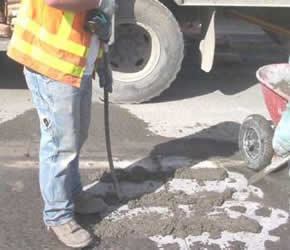
Figure 1 - Vibrating a concrete slab to remove air pockets
Concrete, when placed in a form will not flow into a homogeneous solution and fill all voids and hollows. Left alone, it will leave large air gaps, especially around wire mesh and rebar. Wet concrete may have as much as 20% of it's volume made up of trapped air. This trapped air reduces the density of the concrete, which equates to lower strength and an increase in the concrete's ability to have water permeate through it.
Because of this phenomenon, it is critical that the concrete be vibrated, removing any air pockets and filling all voids.
Many individuals believe that vibrating concrete is only important on large construction projects. It is just as important when your involved in a DIY home improvement project such as building a patio or footings for a deck.
Using A Concrete Vibrator Properly:

Figure 2 - Concrete vibrator
When using a concrete vibrator, as shown in Figure 2, it is important that it be used correctly, otherwise you may be creating more problems than you would have had by leaving the air pockets in the concrete.
Do not drag the vibrator head through the concrete. The proper method is to insert the vibrator head, by allowing the weight of the head to penetrate the wet concrete on its own and then withdrawing it slowly. Dragging the vibrator head through the concrete will form mortar channels (areas where there is no aggregate), this will weaken the strength of the finished concrete in that area dramatically.
Using the wrong size vibrator for a specific job is also a common mistake. As a general rule the diameter of the vibrator should be about a 1/4 of the thickness of the slab or radius of the tube being vibrated. If you are pouring a 4″ thick slab, the vibrator should be about 1 inch in diameter, if you are pouring an 8 inches slab the vibrator diameter should be about 2 inches. With a tube, if the tube is 12 inches in diameter, the radius would be 6 inches and the vibrator should be about 1 1/2″ in diameter.
Removing the vibrator head to quickly can cause strength damage to the concrete. The vibrator should be lifted out vertically at a rate of about 3 seconds per foot of thickness of concrete. As an example, a concrete slab that is 6 inches thick should have the vibrating head removed over a period of 1 1/2 seconds.
The vibrator should be left in its inserted position for not less than 5 seconds and not more than 15 seconds.
If you follow the aforementioned guidelines the concrete will be free of air pockets and still be structurally sound and not permeable.
Vibrators come in a variety of sixes and are available for purchase or from most rental businesses.
